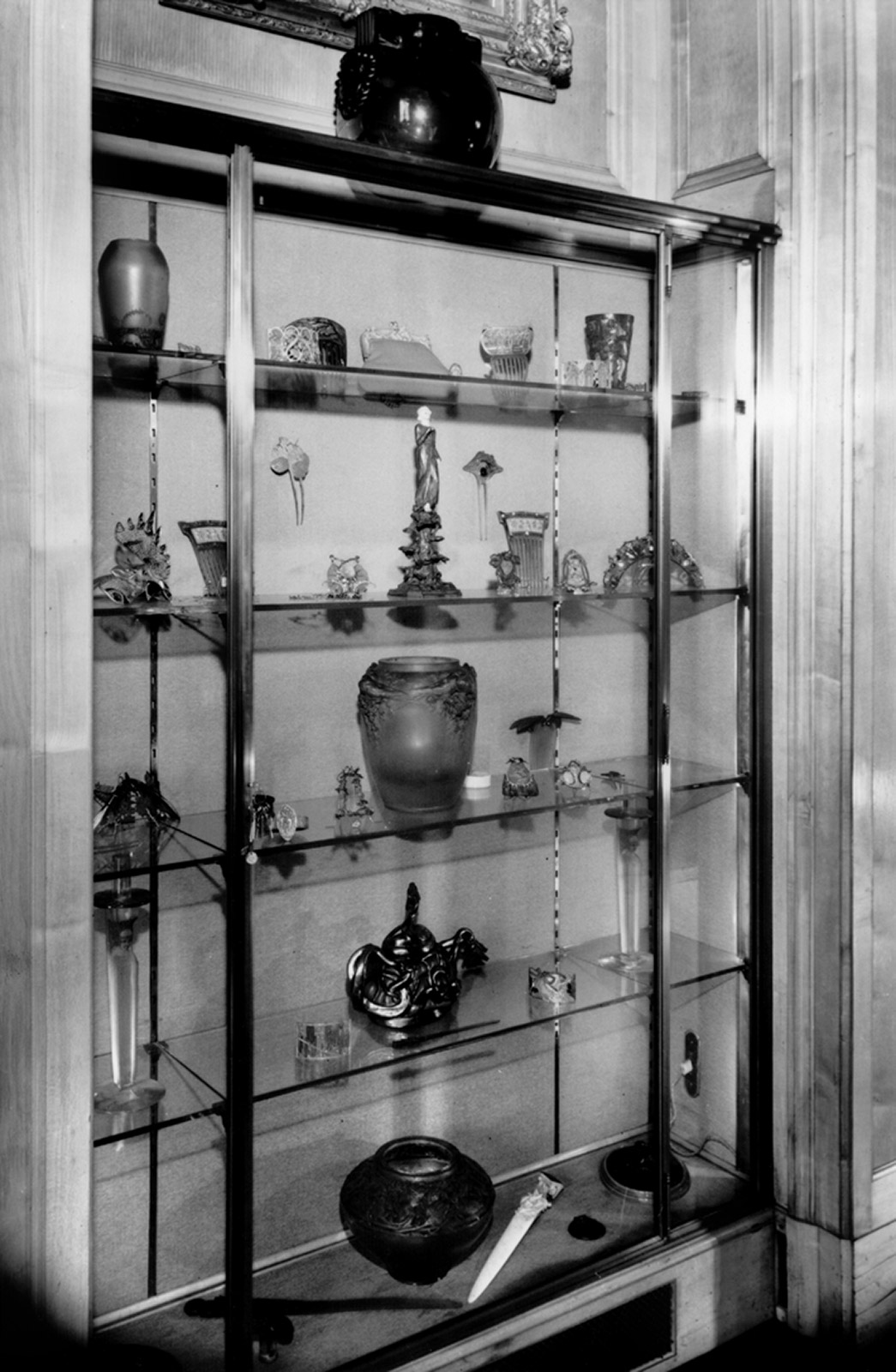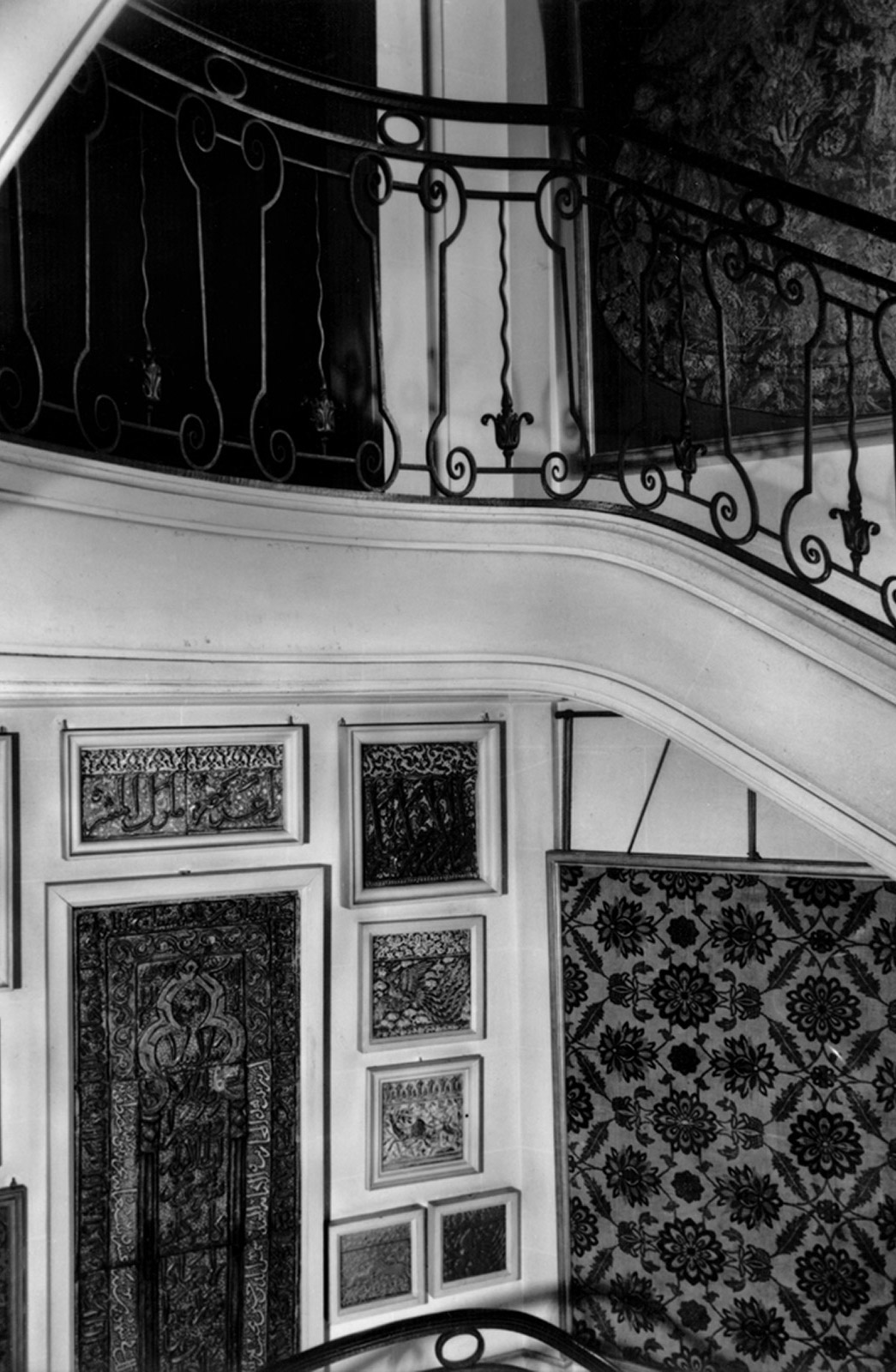The lift doors by Edgar Brandt
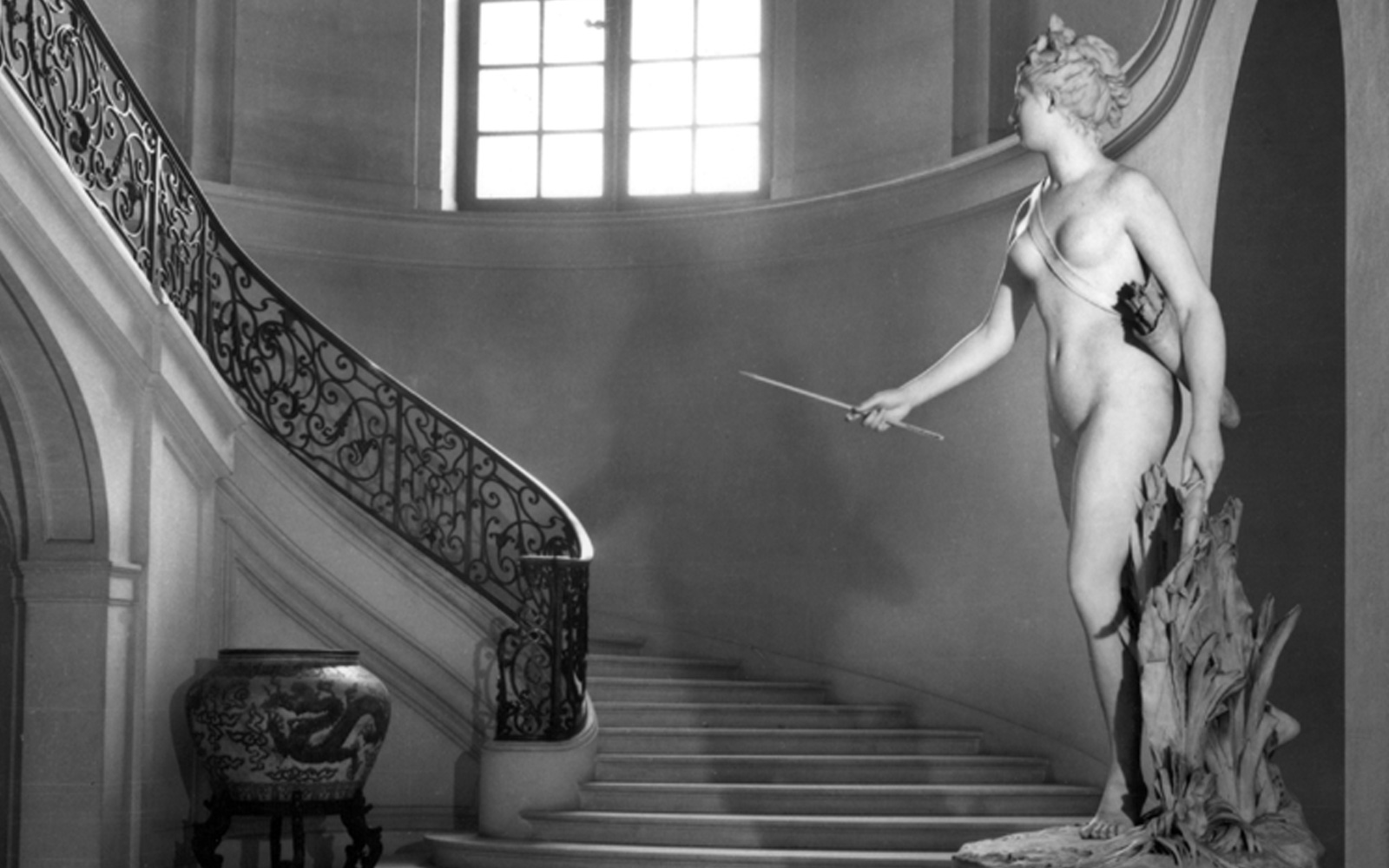
It is hard to imagine that the austere façade of 51 Avenue d’Iéna in Paris once housed two of the most impressive private art collections: that of the banker Rodolphe Kann and that of the oil magnate Calouste Gulbenkian. When Gulbenkian purchased the property in 1922, he began a lengthy, meticulous renovation aiming to transform the hôtel particulier into his family home and setting for his collection.
One of the artists who contributed to the decoration of the property was Edgar Brandt (1880-1960), who was known for his iron creations. Born in Paris, Edgar Brandt began his career by producing weaponry – some of the weapons he designed were copied extensively during the two World Wars. He then began to create other kinds of objects, such as wrought iron doors and gates, lamp stands, tables and chairs.
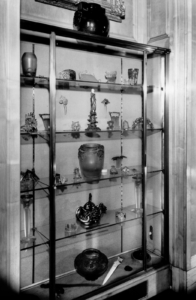
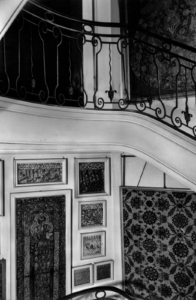
Like Lalique, Brandt successfully participated in the International Exhibition of Modern Decorative and Industrial Arts held in Paris in 1925. The exhibition, which played a key role in boosting industry at a time when Europe had been devastated by World War I, gave rise to the emergence of a new aesthetic: Art Deco.
Calouste Gulbenkian was fond of this new trend and commissioned several prominent pieces for his home from Brandt, including the wrought iron railings for the main staircase, at the foot of which lay Houdon’s Diana sculpture. Brandt was also responsible for designing the railings for the private staircase leading to the quarters of the collector’s wife and daughter, as well as for making the main door (adapting the initial design by René Lalique), the lobby door and the exterior railings for the windows.
Gulbenkian also asked the artist to design several pieces of furniture, including a coiffeuse (or dressing table) and display cabinets, where he exhibited some of the pieces in his collection. However, one of Brandt’s most interesting contributions was the creation of two doors for the lift in the house, which were made from wrought iron, glass and patinated and gilt bronze. The doors, which now form part of the Collection of the Calouste Gulbenkian Museum, were based on the model presented by Brandt at the 1925 exhibition with a decorative motif featuring the figure of the goddess Diana, accompanied by her attributes, against a background of flowers and leaves.
A Collection of Stories
On a weekly basis, we shared a story around Calouste Gulbenkian’s collection. This section was created in 2020, which is why the articles refer to the Calouste Gulbenkian Museum collection as the Founder’s Collection.
Other stories
